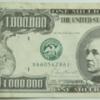Windows 10
CorelDraw X7, 2017 & 2021
Chinese 100 watt laser
Good Evening Everyone,
I'd like to create a stencil with a laser to be used for wine glass etching. I have attempted to use a laser to etch Riedel wine glasses previously with poor results, mainly due to the amount of lead used in these glasses.
I have had success using "Armour Etch" acid cream to etch Riedel wine glasses and would like to use it to etch some Riedel glasses for a customer.
My intent is to use blue painters tape, transfer tape or other adhesive backed material for the stencil material and cut the stencil with a laser.
The problem with a traditional stencil is that the centers of letters (O, P, D, R, etc.) or objects normally are connected to the stencil body using "bridges". I would like to eliminate the need for "bridges" by attaching the adhesive backed stencil material to a substrate that allows the adhesive to grip substrate, but would release the stencil material when transfer tape is used to remove the stencil from the substrate. The stencil would then be placed on the glass the adhesive backed stencil material bonding to the glass and the transfer tape removed leaving the stencil adhered to the glass ready of acid etching.
The steps of the process would be:
1. Attached the adhesive backed stencil material to a substrate that would not be damaged by low power engraving (steel, aluminum, etc.)
2. Using low power, laser engrave the stencil material to remove those areas to be acid etched
3. Use transfer tape to remove the stencil from the substrate
4. Attached to stencil to the wine glass using the transfer tape to correctly position the stencil
5. Remove the transfer tape from the stencil leaving the stencil adhered to the wine glass
6. The stencil is now ready for the acid etching of the wine glass
This above method is similar to the process used for attaching "cut adhesive backed vinyl" letters and graphics for signs
Has anyone tried the above described method of creating/using a stencil with any success?
Specifically, what materials did you use for the:
Substrate
Adhesive backed stencil material
Transfer tape to remove the stencil from the substrate that allows the stencil to remain attached to the glass for acid etching
An obvious recommendation without knowing much about the project would be to use a vinyl "drag knife" cutter to cut the stencil from adhesive backed vinyl. However, this is not a viable solution as the letters are far too small (11 pt) to be cut with a "contact cutting device" such as a vinyl cutter.
Another recommendation would be to attach the stencil material directly to the glass, engrave the stencil "in place" and then apply the acid cream to etch the glass. This is not possible due to the curvature of this specific wine glass.
Thank You,
Roger




 Reply With Quote
Reply With Quote



 - fiber lasers
- fiber lasers
